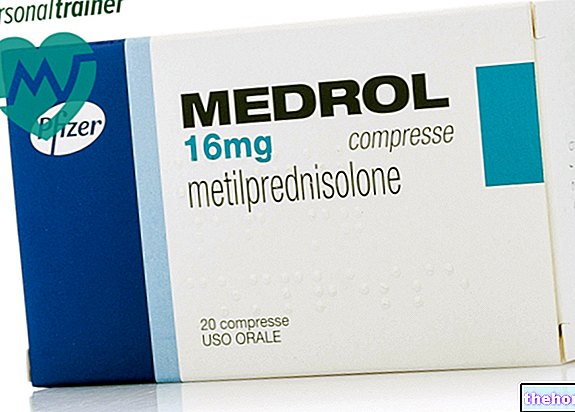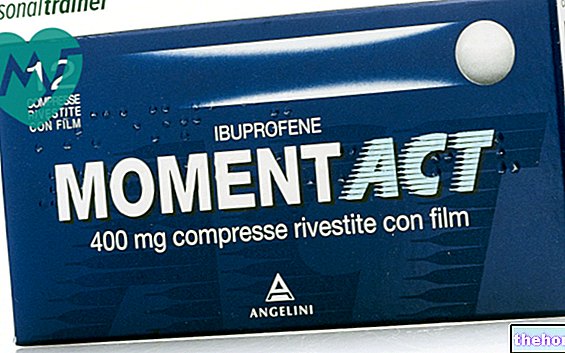Active ingredients: Piracetam
NOOTROPIL 1200 mg film-coated tablets
NOOTROPIL 3 g / 15 ml oral and injectable solution for intravenous use
NOOTROPIL 12 g / 60 ml solution for infusion
Why is Nootropil used? What is it for?
PHARMACOTHERAPEUTIC CATEGORY
Psychostimulants and Nootropics.
THERAPEUTIC INDICATIONS
Treatment of cortical myoclonus, alone or in combination with other drugs.
Contraindications When Nootropil should not be used
Hypersensitivity to the active substance (piracetam) or to other derivatives of pyrrolidone or to any of the excipients.
Piracetam is contraindicated in patients with cerebral hemorrhage.
Piracetam is contraindicated in patients with end-stage renal disease.
Piracetam should not be used in Huntington's disease patients.
Precautions for use What you need to know before taking Nootropil
Effects on platelet aggregation
Due to the effect of piracetam on platelet aggregation, caution is recommended in patients with severe bleeding, patients at risk of bleeding such as in cases of gastrointestinal ulcer, patients with underlying haemostasis disorders, patients with a history of cerebrovascular accident bleeding, patients undergoing major surgery, including dental surgery, and patients using anticoagulants or antiplatelet drugs, including low-dose aspirin.
Kidney failure
Piracetam is eliminated by the kidney and therefore care should be taken in cases of renal insufficiency (see "Dose, method and time of administration").
Senior citizens
In case of long-term treatment in the elderly, regular assessment of creatinine clearance is required to allow dosage adjustment if necessary (see "Dose, method and time of administration").
Interruption
Abrupt discontinuation of treatment should be avoided in patients with myoclonus as it may induce a sudden relapse or withdrawal seizure.
Interactions Which drugs or foods can modify the effect of Nootropil
Tell your doctor or pharmacist if you have recently taken any other medicines, even those without a prescription.
Pharmacokinetic interactions
Since approximately 90% of the piracetam dose is excreted unchanged in the urine, a low drug interaction potential is expected to cause changes in piracetam pharmacokinetics.
In vitro, piracetam does not inhibit human hepatic cytochrome P450 isoforms CYP 1A2, 2B6, 2C8, 2C9, 2C19, 2D6, 2E1 and 4A9 / 11 at concentrations of 142, 426 and 1422 μg / ml. At a concentration of 1422 μg / mL, minor inhibitory effects were observed on CYP 2A6 (21%) and 3A4 / 5 (11%). However, the Ki values for inhibition of these two CYP isoforms are likely to be well in excess of the 1422 μg / mL concentration. Metabolic interactions of piracetam with other drugs are therefore unlikely.
Thyroid hormones
Cases of confusion, irritability and sleep disturbances have been reported during concomitant treatment with thyroid extracts (T3 + T4).
Acenocoumarol
In a single-blind, published study conducted in patients with severe recurrent venous thrombosis, the administration of 9.6 g / day of piracetam did not change the doses of acenocoumarol necessary to obtain INR (International Normalized Ratio) values of 2, 5 to 3.5; however, in comparison with the effects of acenocoumarol alone, the addition of 9.6 g / day of piracetam led to a significant decrease in platelet aggregation, β-thromboglobulin release, fibrinogen levels and factors vonWillebrand's (VIII: C; VIII: vW: Ag; VIII: vW: RCo) and the viscosity of blood and plasma.
Antiepileptic drugs
A dose of 20 g per day of piracetam for 4 weeks did not change the peak and trough of serum levels of antiepileptic drugs (carbamazepine, phenytoin, phenobarbital, valproate) in epileptic patients receiving stable doses.
Alcohol
Concomitant alcohol administration had no effect on the serum levels of piracetam and the alcohol levels were not affected by an oral dose of 1.6 g of piracetam.
Warnings It is important to know that:
Warnings relating to excipients
Nootropil 1200 mg film-coated tablets contain approximately 2 mmol (approximately 46 mg) sodium per 24 g of piracetam. To be taken into consideration in people on a low sodium diet.
Nootropil 3 g / 15 ml oral and injectable solution for intravenous use contains less than 1 mmol (23 mg) sodium per 24 g of piracetam.
Nootropil 12 g / 60 ml solution for infusion contains approximately 19 mmol (approximately 445 mg) sodium per 24 g of piracetam. To be taken into consideration in people on a low sodium diet.
Pregnancy and breastfeeding
Ask your doctor or pharmacist for advice before taking any medicine.
There are no adequate data on the use of piracetam in pregnant women.
Piracetam crosses the placental barrier.
The drug levels in the newborn are about 70 - 90% of those in the mother. Piracetam should not be used in pregnancy unless clearly necessary, when the benefits outweigh the risks and the clinical condition of the mother requires treatment with piracetam.
Piracetam is excreted in breast milk and therefore, during breastfeeding, treatment with this drug should be avoided or breastfeeding should be discontinued. The decision whether to discontinue breastfeeding or to discontinue piracetam therapy must be made taking into account the benefits of breastfeeding for the child and the benefits of piracetam therapy for the woman.
Effects on ability to drive and use machines
Based on the adverse events observed with the use of the drug, it must be considered that piracetam may interfere with the ability to drive or use machines.
Dosage and method of use How to use Nootropil: Dosage
The daily dosage, divided into two or three administrations, must begin with 7.2 g, which can be increased by 4.8 g every three or four days up to a maximum of 24 g.
Treatment with other anti-myoclonic medicinal products should be maintained at the same dosage. Depending on the clinical benefit obtained, the dosage of other medicinal products of this type should be reduced if possible.
Once started, piracetam treatment should be continued as long as the original brain disorder persists.
In patients with an acute episode, spontaneous evolution may occur over time and therefore, every six months, an attempt should be made to decrease or discontinue drug treatment. This should be done by reducing the piracetam dose by 1.2 g every two days (every three to four days in case of Lance and Adams syndrome, in order to prevent the possibility of a sudden relapse or withdrawal seizure). .
Dosage adjustment in the elderly
Dosage adjustment is recommended in elderly patients with impaired renal function (see "Dosage adjustment in patients with renal insufficiency" below).
For long-term treatment in the elderly, regular assessment of creatinine clearance is required to allow for dosage adjustment if necessary.
Dosage adjustment in patients with renal insufficiency
The daily dose should be individualized according to renal function. Refer to the following table and adjust the dosage as indicated. An estimate of the patient's creatinine clearance (CLcr) in ml / min is required to use this dosing table.
CLcr in ml / min can be estimated from the determination of serum creatinine (mg / dl), using the following formula:
Dosage adjustment in patients with hepatic insufficiency
No dosage adjustment is necessary in patients with hepatic insufficiency alone. In the case of patients with hepatic and renal insufficiency, a dose adjustment is recommended (see "Dosage adjustment in patients with renal insufficiency" above).
Method of administration
Piracetam must be administered orally and can be taken with or without food. The tablets should be swallowed with liquid.
It is recommended to take the daily dose by dividing it into equal parts to be taken 2 to 4 times a day.
When parenteral administration is required (e.g. in case of difficulty in swallowing, unconsciousness), Nootropil can be administered intravenously at the same recommended daily dose.
- The solution for injection in ampoules should be administered intravenously by injection over several minutes.
- The solution for infusion should be administered continuously, at the recommended daily dose, over a period of 24 hours.
Overdose What to do if you have taken too much Nootropil
In case of accidental ingestion / intake of an excessive dose of Nootropil, notify your doctor immediately or go to the nearest hospital.
Symptoms
No additional adverse events specifically related to piracetam overdose were reported. The highest reported overdose with piracetam involved taking 75 g orally, associated with haemorrhagic diarrhea with abdominal pain, which was most likely caused by the extremely high dose of sorbitol contained in the formulation used.
Treatment
In the event of acute and significant overdose, stomach emptying can be performed by gastric lavage or induction of emesis. There is no specific antidote for piracetam overdose. Treatment will therefore be symptomatic and may include hemodialysis.
The extraction efficiency of the dialyzer for piracetam is approximately 50-60%.
If you have any questions about the use of Nootropil, ask your doctor or pharmacist.
Side Effects What are the side effects of Nootropil
Like all medicines, Nootropil can cause side effects, although not everybody gets them.
to. Summary of the safety profile
Double-blind, placebo-controlled clinical trials or clinical pharmacology studies, on which safety data are available (extracted from the UCB Documentation Data Bank of June 1997), included more than 3000 subjects who received piracetam, without distinction of indication, pharmaceutical form, daily dosage or characteristics of the population.
b. Tabular list of adverse reactions
Undesirable effects reported in clinical trials and post-marketing experience are listed below, classified by system organ and frequency. The frequency is defined as: very common (≥1 / 10); common (≥1 / 100 ,
Disorders of the blood and lymphatic system:
Not known: bleeding disorder
Immune system disorders:
Not known: anaphylactoid reaction, hypersensitivity
Psychiatric disorders:
Common: nervousness
Uncommon: depression
Not known: agitation, anxiety, confusion, hallucinations
Nervous system disorders:
Common: hyperkinesis
Uncommon: somnolence
Not known: ataxia, balance disturbance, aggravated epilepsy, headache, insomnia
Ear and labyrinth disorders:
Not known: vertigo
Vascular disorders:
Rare: thrombophlebitis (for injectable form only), hypotension (for injectable form only)
Gastrointestinal disorders:
Not known: abdominal pain, pain in the upper abdomen, diarrhea, nausea, vomiting
Skin and subcutaneous tissue disorders:
Not known: angioneurotic edema, dermatitis, pruritus, urticaria
General disorders and administration site conditions:
Uncommon: asthenia
Rare: injection site pain (for injectable form only), pyrexia (for injectable form only)
Diagnostic tests:
Common: weight gain
Compliance with the instructions contained in the package leaflet reduces the risk of undesirable effects.
If any of the side effects gets serious, or if you notice any side effects not listed in this leaflet, please inform your doctor or pharmacist.
Expiry and Retention
Expiry: see the expiry date printed on the package.
The expiry date refers to the product in intact packaging, correctly stored.
WARNING: do not use the medicine after the expiry date shown on the package.
The expiry date refers to the last day of the month.
This medicine does not require any special storage conditions.
Medicines should not be disposed of via wastewater or household waste. Ask your pharmacist how to dispose of medicines you no longer use. This will help protect the environment.
KEEP THE MEDICINAL PRODUCT OUT OF THE REACH AND SIGHT OF CHILDREN.
Composition and pharmaceutical form
COMPOSITION
Film-coated tablets
1 tablet contains:
Active ingredient: Piracetam 1200 mg.
Excipients: Core: Macrogol 6000, Silica, colloidal anhydrous, Magnesium stearate, Croscarmellose sodium.
Coating: Opadry Y-1-7000, consisting of: Hypromellose, Titanium dioxide, Macrogol 400; Opadry OY-S-29019, consisting of: Hypromellose and Macrogol 6000.
Oral and injectable solution for intravenous use
1 ampoule of 15 ml contains:
Active ingredient: Piracetam 3 g.
Excipients: Sodium acetate, Glacial acetic acid, Water for injections.
Solution for infusion
Each 60ml bottle contains:
Active ingredient: Piracetam 12 g.
Excipients: Sodium acetate, Water for injections, Glacial acetic acid, Sodium chloride.
PHARMACEUTICAL FORM AND CONTENT
Film-coated tablets. Box of 40 in blister.
Oral and injectable solution for intravenous use. 15 ml vials. Box of 12.
Solution for infusion. 60 ml bottle.
Source Package Leaflet: AIFA (Italian Medicines Agency). Content published in January 2016. The information present may not be up-to-date.
To have access to the most up-to-date version, it is advisable to access the AIFA (Italian Medicines Agency) website. Disclaimer and useful information.
01.0 NAME OF THE MEDICINAL PRODUCT
NOOTROPIL
02.0 QUALITATIVE AND QUANTITATIVE COMPOSITION
Nootropil 1200 mg film-coated tablets
Each tablet contains 1200 mg of piracetam.
Nootropil 3 g / 15 ml oral and injectable solution for intravenous use
Each 15ml vial contains 3g of piracetam.
Nootropil 12 g / 60 ml solution for infusion
Each 60ml bottle contains 12g of piracetam.
For the full list of excipients, see section 6.1.
03.0 PHARMACEUTICAL FORM
Nootropil 1200 mg film-coated tablets
White, oblong, film-coated tablets with a breakline and marked N / N.
Nootropil 3 g / 15 ml oral and injectable solution for intravenous use
Clear and colorless solution.
Nootropil 12 g / 60 ml solution for infusion
Clear and colorless solution.
04.0 CLINICAL INFORMATION
04.1 Therapeutic indications
Treatment of cortical myoclonus, alone or in combination with other drugs.
04.2 Posology and method of administration
The daily dosage, divided into two or three administrations, must begin with 7.2 g, which can be increased by 4.8 g every three or four days up to a maximum of 24 g.
Treatment with other anti-myoclonic medicinal products should be maintained at the same dosage. Depending on the clinical benefit obtained, the dosage of other medicinal products of this type should be reduced if possible.
Once started, piracetam treatment should be continued as long as the original brain disorder persists.
In patients with an acute episode, spontaneous evolution may occur over time and therefore, every six months, an attempt should be made to decrease or discontinue drug treatment. This should be done by reducing the piracetam dose by 1.2 g every two days (every three to four days in case of Lance and Adams syndrome, in order to prevent the possibility of a sudden relapse or withdrawal seizure). .
Dosage adjustment in the elderly
Dosage adjustment is recommended in elderly patients with impaired renal function (see "Dosage adjustment in patients with renal insufficiency" below). For long-term treatment in the elderly, regular assessment of creatinine clearance is required to allow for dosage adjustment if necessary.
Dosage adjustment in patients with renal insufficiency
The daily dose should be individualized according to renal function. Refer to the following table and adjust the dosage as indicated. An estimate of the patient's creatinine clearance (CLcr) in ml / min is required to use this dosing table.
CLcr in ml / min can be estimated from the determination of serum creatinine (mg / dl), using the following formula:
Dosage adjustment in patients with hepatic insufficiency
No dosage adjustment is necessary in patients with hepatic insufficiency alone. In the case of patients with hepatic and renal insufficiency, a dose adjustment is recommended (see "Dosage adjustment in patients with renal insufficiency" above).
Method of administration
Piracetam must be administered orally and can be taken with or without food. The tablets should be swallowed with liquid.
It is recommended to take the daily dose by dividing it into equal parts to be taken 2 to 4 times a day.
When parenteral administration is necessary (e.g. in case of difficulty in swallowing, unconsciousness), piracetam can be administered intravenously at the same recommended daily dose.
• The solution for injection in ampoules should be administered intravenously by injection over several minutes.
• The solution for infusion should be administered continuously, at the recommended daily dose, over a 24 hour period.
04.3 Contraindications
Hypersensitivity to the active substance (piracetam) or to other derivatives of pyrrolidone or to any of the excipients.
Piracetam is contraindicated in patients with cerebral hemorrhage.
Piracetam is contraindicated in patients with end-stage renal disease.
Piracetam should not be used in Huntington's disease patients.
04.4 Special warnings and appropriate precautions for use
Effects on platelet aggregation
Due to the effect of piracetam on platelet aggregation, caution is recommended in patients with severe bleeding, patients at risk of bleeding such as in cases of gastrointestinal ulcer, patients with underlying haemostasis disorders, patients with a history of cerebrovascular accident bleeding, patients undergoing major surgery, including dental surgery, and patients using anticoagulants or antiplatelet drugs, including low-dose aspirin.
Kidney failure
Piracetam is eliminated renally and therefore caution should be exercised in cases of renal insufficiency (see section 4.2).
Senior citizens
In case of long-term treatment in the elderly, regular assessment of creatinine clearance is required to allow for dosage adjustment if necessary (see section 4.2).
Interruption
Abrupt discontinuation of treatment should be avoided in patients with myoclonus as it may induce a sudden relapse or withdrawal seizure.
Warnings relating to excipients
Nootropil 1200 mg film-coated tablets contain approximately 2 mmol (approximately 46 mg) sodium per 24 g of piracetam. To be taken into consideration in people on a low sodium diet.
Nootropil 3 g / 15 ml oral and injectable solution for intravenous use contains less than 1 mmol (23 mg) sodium per 24 g of piracetam.
Nootropil 12 g / 60 ml solution for infusion contains approximately 19 mmol (approximately 445 mg) sodium per 24 g of piracetam. To be taken into consideration in patients on a low sodium diet.
04.5 Interactions with other medicinal products and other forms of interaction
Pharmacokinetic interactions
Since approximately 90% of the piracetam dose is excreted unchanged in the urine, a low drug interaction potential is expected to cause changes in piracetam pharmacokinetics.
In vitro, piracetam does not inhibit human hepatic cytochrome P450 isoforms CYP 1A2, 2B6, 2C8, 2C9, 2C19, 2D6, 2E1 and 4A9 / 11 at concentrations of 142, 426 and 1422 mcg / ml.
At the concentration of 1422 mcg / ml, minor inhibitory effects were observed on CYP 2A6 (21%) and 3A4 / 5 (11%). However, the Ki values for inhibition of these two CYP isoforms are likely to be well above the concentration of 1422 mcg / mL. Metabolic interactions of piracetam with other drugs are therefore unlikely.
Thyroid hormones
Cases of confusion, irritability and sleep disturbances have been reported during concomitant treatment with thyroid extracts (T3 + T4).
Acenocoumarol
In a single-blind, published study conducted in patients with severe recurrent venous thrombosis, the administration of 9.6 g / day of piracetam did not change the doses of acenocoumarol necessary to obtain INR (International Normalized Ratio) values of 2, 5 to 3.5; however, in comparison with the effects of acenocoumarol alone, the addition of 9.6 g / day of piracetam led to a significant decrease in platelet aggregation, b-thromboglobulin release, fibrinogen levels and factors vonWillebrand's (VIII: C; VIII: vW: Ag; VIII: vW: RCo) and the viscosity of blood and plasma.
Antiepileptic drugs
A dose of 20 g per day of piracetam for 4 weeks did not change the peak and trough of serum levels of antiepileptic drugs (carbamazepine, phenytoin, phenobarbital, valproate) in epileptic patients receiving stable doses.
Alcohol
Concomitant alcohol administration had no effect on the serum levels of piracetam and the alcohol levels were not affected by an oral dose of 1.6 g of piracetam.
04.6 Pregnancy and lactation
Pregnancy
There are no adequate data on the use of piracetam in pregnant women. Animal studies have not provided indications of direct or indirect harmful effects on pregnancy, embryonal / fetal development, parturition or postnatal development (see section 5.3).
Piracetam crosses the placental barrier.
The drug levels in the newborn are about 70 - 90% of those in the mother. Piracetam should not be used in pregnancy unless clearly necessary, when the benefits outweigh the risks and the clinical condition of the mother requires treatment with piracetam.
Feeding time
Piracetam is excreted in breast milk and therefore, during breastfeeding, treatment with this drug should be avoided or breastfeeding should be discontinued. The decision whether to discontinue breastfeeding or to discontinue piracetam therapy must be made taking into account the benefits of breastfeeding for the child and the benefits of piracetam therapy for the woman.
04.7 Effects on ability to drive and use machines
Based on the adverse events observed with the use of the drug, it must be considered that piracetam may interfere with the ability to drive or use machines.
04.8 Undesirable effects
to. Summary of the safety profile
Double-blind, placebo-controlled clinical trials or clinical pharmacology studies, on which safety data are available (extracted from the UCB Documentation Data Bank of June 1997), included more than 3000 subjects who received piracetam, without distinction of indication, pharmaceutical form, daily dosage or characteristics of the population.
b. Tabular list of adverse reactions
Undesirable effects reported in clinical trials and post-marketing experience are listed below, classified by system organ and frequency. The frequency is defined as: very common (≥1 / 10); common (≥1 / 100 ,
Disorders of the blood and lymphatic system:
Not known: bleeding disorder
Immune system disorders:
Not known: anaphylactoid reaction, hypersensitivity
Psychiatric disorders:
Common: nervousness
Uncommon: depression
Not known: agitation, anxiety, confusion, hallucinations
Nervous system disorders:
Common: hyperkinesis
Uncommon: somnolence
Not known: ataxia, balance disturbance, aggravated epilepsy, headache, insomnia
Ear and labyrinth disorders:
Not known: vertigo
Vascular disorders:
Rare: thrombophlebitis (for injectable form only), hypotension (for injectable form only)
Gastrointestinal disorders:
Not known: abdominal pain, pain in the upper abdomen, diarrhea, nausea, vomiting
Skin and subcutaneous tissue disorders:
Not known: angioneurotic edema, dermatitis, pruritus, urticaria
General disorders and administration site conditions:
Uncommon: asthenia
Rare: injection site pain (for injectable form only), pyrexia (for injectable form only)
Diagnostic tests:
Common: weight gain
04.9 Overdose
Symptoms
No additional adverse events specifically related to piracetam overdose were reported. The highest reported overdose with piracetam involved taking 75 g orally associated with haemorrhagic diarrhea with abdominal pain, which was most likely caused by the extremely high dose of sorbitol contained in the formulation used.
Treatment
In the event of acute and significant overdose, stomach emptying can be performed by gastric lavage or induction of emesis. There is no specific antidote for piracetam overdose. Treatment will therefore be symptomatic and may include hemodialysis. The extraction efficiency of the dialyzer for piracetam is approximately 50-60%.
05.0 PHARMACOLOGICAL PROPERTIES
05.1 Pharmacodynamic properties
Pharmacotherapeutic group: psychostimulants and nootropics, ATC code: N06BX03
The active substance, piracetam, is a pyrrolidone (2-oxo-1-pyrrolidinacetamide), a cyclic derivative of gamma-aminobutyric acid (GABA).
Available data suggest that piracetam's basic mechanism of action is neither cell nor organ specific. of the membrane characterized by the formation of mobile drug-phospholipid complexes.This probably results in an increase in the stability of the membrane, allowing the membrane and transmembrane proteins to maintain or recover the three-dimensional structure or folding essential to exercise their function.
Piracetam has neuronal and vascular effects.
At the neuronal level, piracetam exerts its action on membranes in several ways.
In animals, piracetam intensifies different types of neurotransmission, essentially through the post-synaptic modulation of the density and activity of receptors. In normal subjects as well as in states of deficiency, both in animals and in humans, the functions involved in cognitive processes as learning, memory, attention and conscious state are intensified without the development of sedative or psychostimulating effects. Piracetam protects and restores cognitive abilities in animals and humans following various brain traumas such as hypoxia, intoxications and electroconvulsive therapies. It protects against changes in functions and performance induced by hypoxia as estimated by electroencephalographic (EEG) and psychometric evaluations .
05.2 Pharmacokinetic properties
Absorption
Piracetam is rapidly and almost completely absorbed orally with absolute bioavailability close to 100%. In fasting subjects, peak plasma concentrations are reached 1 hour after administration. Food does not affect the extent of piracetam absorption but reduces the mean Cmax value by 17% and increases the mean tmax value from 1 to 1.5 hours.After oral administration of a single 3.2 g dose the peak concentration was estimated to be 84 mcg / ml; after administration of doses of 3.2 g, repeated three times a day, the maximum concentration was estimated to be 115 mcg / ml.
Distribution
Piracetam does not bind to plasma proteins and its apparent volume of distribution has been estimated to be 0.6 l / kg. Piracetam crosses the blood brain barrier and has been measured in cerebrospinal fluid following administration of a single intravenous dose. In cerebrospinal fluid, t was reached approximately 5 hours after administration and the half-life was approximately 8.5 hours. In animal brains, the highest concentrations of piracetam were found in the cerebral cortex (frontal, parietal and occipital lobes. ), in the cerebellar cortex and in the basal ganglia Piracetam diffuses to all tissues except adipose tissue, crosses the placental barrier and penetrates the membranes of isolated red blood cells.
Biotransformation
Piracetam is excreted almost completely unchanged through glomerular filtration. The apparent absence of metabolite formation is also confirmed by the considerable prolongation of the plasma half-life in anuric patients.
Elimination
Following intravenous or oral administration, the plasma half-life of piracetam in adults is approximately 5 hours. The apparent total body clearance of piracetam is 80-90 ml / min. The main route of excretion is the urinary route through which it is eliminated by 80% to 100% of the dose. Piracetam is eliminated by glomerular filtration.
Linearity
The pharmacokinetics of piracetam are linear over a dose range of 0.8 to 12 g.
Pharmacokinetic characteristics such as half-life and clearance are not affected by dose and duration of treatment.
Characteristics in patients
Type
In a bioequivalence study comparing formulations at doses of 2.4 g, Cmax and AUC were approximately 30% higher in women (N = 6) than in men (N = 6). However, body weight corrected clearance was comparable.
Senior citizens
In the elderly, the half-life of piracetam is increased and the increase correlates with the decrease in renal function in this population (see section 4.2 "Posology").
Children
No formal pharmacokinetic studies have been conducted in children.
Kidney failure
Piracetam clearance correlates with creatinine clearance. Therefore, in patients with renal insufficiency, it is recommended to adjust the daily dose of piracetam on the basis of creatinine clearance (see section 4.2 "Posology").
In anuric subjects with end-stage renal disease, the half-life of piracetam is increased up to 59 hours. The removal fraction of piracetam was 50 to 60% in a typical 4-hour dialysis session.
Hepatic insufficiency
The influence of hepatic insufficiency on piracetam pharmacokinetics has not been evaluated. Since 80 to 100% of the dose is excreted in the urine as unchanged drug, liver failure alone is not expected to have significant effects on the elimination of piracetam.
05.3 Preclinical safety data
Preclinical data indicate that piracetam has low potential toxicity. Single-dose studies have shown no irreversible toxicity following oral doses of 10 g / kg in mice, rats and dogs. No target organs were observed in chronic, repeat-dose toxicity studies in mice (up to 4.8 g / kg / day) and rats (up to 2.4 g / kg / day). Mild gastrointestinal effects (emesis, change in stool consistency, increased water consumption) were observed in dogs following oral administration of piracetam for one year at increasing doses from 1 to 10 g / kg / day. Similarly, intravenous administration of up to 1 g / kg / day for 4-5 weeks in rats and dogs did not cause toxicity. Education in vivo and in vitro they did not demonstrate any genotoxic and carcinogenic potential.
06.0 PHARMACEUTICAL INFORMATION
06.1 Excipients
Nootropil 1200 mg film-coated tablets:
Nucleus: Macrogol 6000, anhydrous colloidal silica, magnesium stearate, croscarmellose sodium.
Coating: Opadry Y-1-7000 consisting of: hypromellose, titanium dioxide, Macrogol 400; Opadry OY-S-29019 composed of hypromellose and Macrogol 6000.
Nootropil 3 g / 15 ml oral and injectable solution for intravenous use:
Sodium acetate, glacial acetic acid, water for injections.
Nootropil 12 g / 60 ml solution for infusion:
Sodium acetate, glacial acetic acid, sodium chloride, water for injections.
06.2 Incompatibility
None known.
06.3 Period of validity
Film-coated tablets: 4 years.
Oral and injectable solution for intravenous use: 5 years.
Solution for infusion: 5 years.
06.4 Special precautions for storage
This medicine does not require any special storage conditions.
06.5 Nature of the immediate packaging and contents of the package
Film-coated tablets: blister - box of 40
Oral and injectable solution for intravenous use: clear glass ampoules - box of 12
Solution for infusion: clear glass bottle closed with a rubber closure composed of chlorobutyl elastomers.
06.6 Instructions for use and handling
No particular precautions.
07.0 MARKETING AUTHORIZATION HOLDER
UCB Pharma S.p.A. - Via Gadames 57 - 20151 Milan
08.0 MARKETING AUTHORIZATION NUMBER
Film-coated tablets: A.I.C. 022921098.
Oral and injectable solution for intravenous use: A.I.C. 022921086.
Solution for infusion: A.I.C. 022921074.
09.0 DATE OF FIRST AUTHORIZATION OR RENEWAL OF THE AUTHORIZATION
Film-coated tablets: 13/05/1985 - Renewal: June 2010
Oral and injectable solution for intravenous use: 06/10/1984 - Renewal: June 2010
Solution for infusion: 06/10/1984 - Renewal: June 2010
10.0 DATE OF REVISION OF THE TEXT
February 4, 2014




























